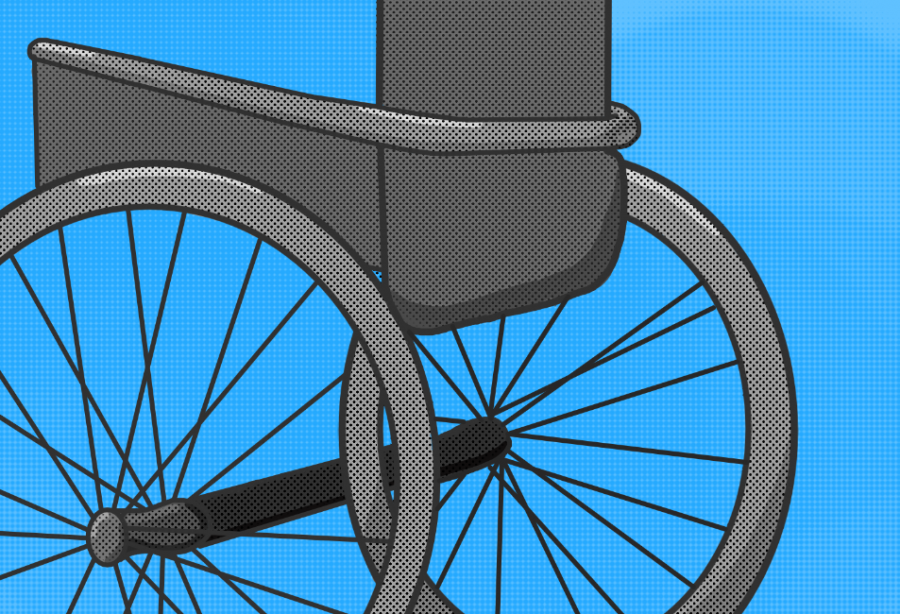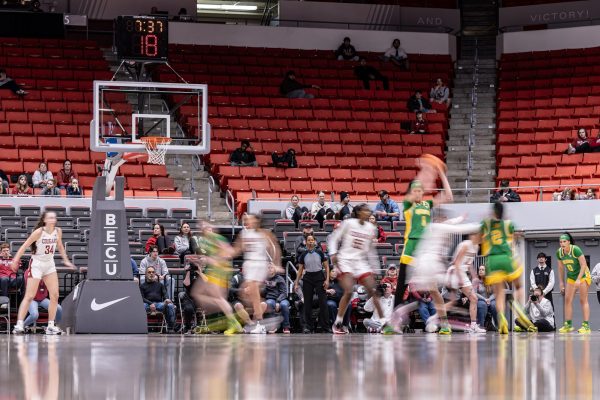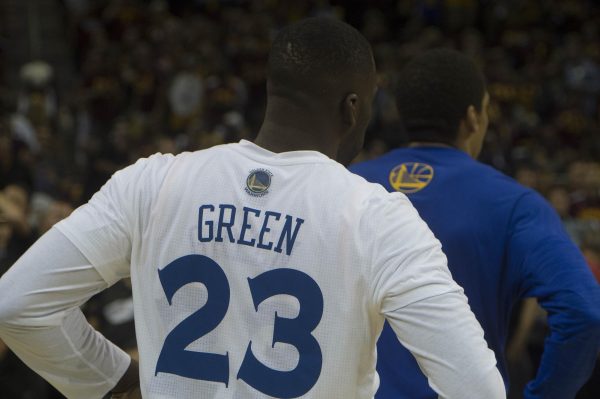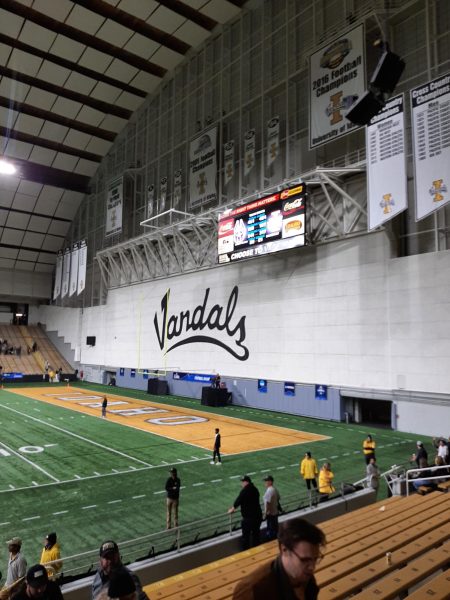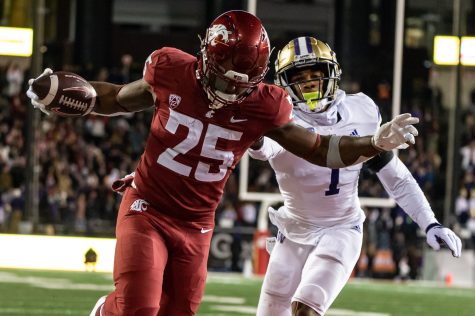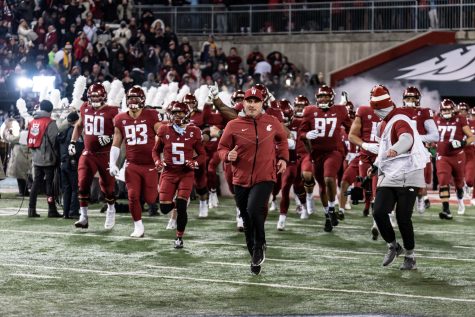OPINION: Accessibility infrastructure at WSU not enough
WSU accessibility services need improvements
WSU’s handicap accessibility is lacking and needs to be improved.
June 10, 2020
On Feb. 22, 2019, I broke my ankle in two places when I slipped on ice. After three nights in the hospital, two screws and a packet from my doctor giving an overview of services available to me, I was on my way to learn what my new normal would be for a few months.
As unprepared as I was for a broken ankle, I was even less prepared for how challenging navigating WSU would be with a temporary disability.
When I finally returned to school, I was met with one of the most obvious and terrifying obstacles to someone newly on crutches: a broken elevator. I got to Kimbrough Music Building on my first day back full-time and found out I had no idea how to get from the lobby to a level with an elevator. When I got to an elevator, it wasn’t working. And I had to go up three floors. So I gritted my teeth and hopped up three flights of stairs because I was determined to get back to “normal.”
My next class was in Education Addition, which also had a broken elevator. I cried.
This elevator was broken for a week’s worth of classes, and each day I had to grip the handrail on the side with one arm and use my other arm to hold my crutch to balance me out. I’d have to ask someone to carry my other crutch up the stairs.
Thankfully, the elevator at Kimbrough was fixed fairly quickly, which I was extremely appreciative of. Unfortunately, this was not an isolated incident.
Michelle White, program assistant at the Kimbrough Music Building, said when the elevators at the building aren’t working, they either call WSU’s Facilities Services or file an online request with a form.
This information — the facilities services’ phone number or a link to the online form — is information that should be available in every elevator across campus. Machines that need to be fixed are unavoidable, but my experience left me feeling like I was at the mercy of whenever someone could fix it. We can return some control to frustrated students by providing this information to them.
Alexander Robinson, junior music major, said elevators were a point of contention for him, too.
“In [McCroskey Hall], it took a while to get a key to the elevator despite it being right next to my room,” he said. “I had to stop doing laundry as frequently because it took a lot out of me to only use one crutch and haul the basket up and down the stairs.”
Another infrastructure element sorely lacking is the disability accessible parking on campus. Without a WSU parking permit but with a state disability permit, students can park in non-WSU accessible parking spots and metered parking for free. To use WSU accessible parking, students need the state disability permit and a WSU parking permit for any zone. These two permits allow people to not only park in any WSU accessible parking spot but also all parking zones.
Every parking lot is required to have a certain number of parking spots that are accessible for people with a disability, according to the ADA. This number is dependent on the amount of parking in that lot.
I’ve spent a lot of time looking up what codes, if any, decide how many parking spots are required for buildings with no immediate parking lot – like Kimbrough or Bryan Hall – but haven’t found any.
I believe wholeheartedly that WSU is complying with ADA and Washington guidelines for accessible parking. I don’t believe, however, that it’s enough.
I frequent Kimbrough and Bryan, and there are only five accessible parking spots that serve those and nearby buildings: Kimbrough, Bryan, Avery Hall, Stevens Hall and Van Doren Hall.
Five parking spots.
To serve the Chinook Student Center, Transportation Services, Hillside Dining Hall, Wilmer Davis Hall and McCroskey Hall, there are only five accessible parking spots, too.
As I mentioned, students can park in zoned lots nearby and the metered parking, but there are days I can’t find parking close enough for my ankle and have to struggle up a hill to get to my classes. Green lots run out of space and so do the meters. Ten parking spots for 10 buildings are not enough.
There is another option that is amazing but also has its limitations. Cougar Accessibility Transportation Services (CATS) is a free service for WSU students that offers transportation from one building to another. For example, they provide rides from the SPARK to the CUB for a class or meeting.
The first problem is that they aren’t super-humans and there are only so many rides they can offer at any given time. The second problem is that students off-campus in apartments can’t get rides to campus.
But wait, what about Pullman Dial-A-Ride, part of Pullman’s public transportation services and therefore included in student fees?
While I am so thankful that our city and community offer this accommodation, I was not able to use it. For each pick-up or drop-off, there is a 20-minute pick-up window given. This is not specified as before or after the time in the handbook. So, if a student wanted to make sure they could attend class on time, they would have to schedule a pick-up 20 minutes before they needed it. They could end up spending an additional hour to get to campus between scheduling earlier and waiting for their ride.
Again, I am so grateful for this option. I wish it had worked for me. When I first broke my ankle, I posted on social media asking how people felt about this transit, and most people who responded said that it was great for going to the store or basic errands, but was less ideal for anything with a time-frame.
Once people do get to campus and park, building entrances are sometimes an obstacle, too. Those buttons outside of automatic doors didn’t work most of the time — my theory is they don’t operate during the after-hours times of buildings. That’s how often they didn’t work.
For some buildings, there is one door after another, and pressing one button will open both doors. This seems logical enough, but what I realized is that students may have to haul through the doors because some of the door pairs open at the same time. There are also some with a separate button for each door, and some that share one button, but the farthest door opens about five seconds after the closest.
After I figured out how to navigate this, I was thankful I was on crutches and not in a wheelchair because getting through those doors would have been even more challenging. I did use a wheelchair for a few events, and it needs to be said — wheelchair users do not get enough credit. It was hard to propel my entire body weight on them, and it’s impossible to navigate precisely without experience.
Gabby Berquist, fourth-year music major, said she shared the same frustrations with the buttons. The Chinook, which has separate buttons for each of the doors, was a frustrating challenge to face as someone who just wanted to get into a building, she said.
Berquist said more concerning than her frustration with buttons was the lack of ice removal around entrances.
“The entrance to the Johnson Tower that was made for the handicap entrance was covered in ice and [made it] a nightmare to get into the building,” Berquist said. “The most disappointing thing was the lack of attention during the winter. It seemed like an easy fix that was just overlooked in favor of entrances to buildings that get more traction from the more able-bodied students.”
But how do people on crutches navigate in the ice and snow? The answer is: not well. I bought some cleats for the bottoms of my crutches, and there are traction pads that go along with them. The reviews on Amazon are not good for either, and the reviews were not wrong based on my experience with them.
Berquist said the experience of trying to get around campus with a temporary disability changed her perspective.
“I think the one good thing that came about when I broke my foot was that it opened my eyes to the problems a lot of students with disabilities face every day,” Berquist said.
I couldn’t agree more.
I hate that I broke my ankle, but I am so grateful I had a chance to understand what other students face for months, years or their entire lives. I don’t believe WSU is intentionally failing their students because they’re following ADA guidelines and laws. I think they’re absolutely doing what they can do. However, I do believe there is a general lack of consideration for those who have disabilities, whether temporary or permanent.
The current infrastructure at WSU is not enough to adequately support the students who need these accommodations. In the future, I hope WSU will fight to find ways to better support their students.

